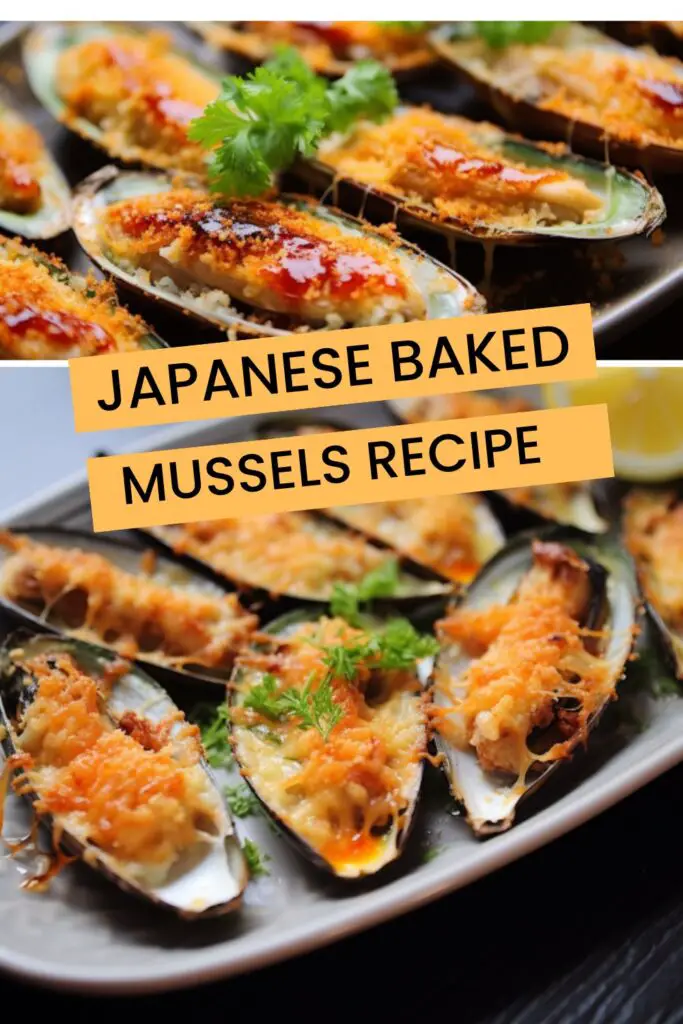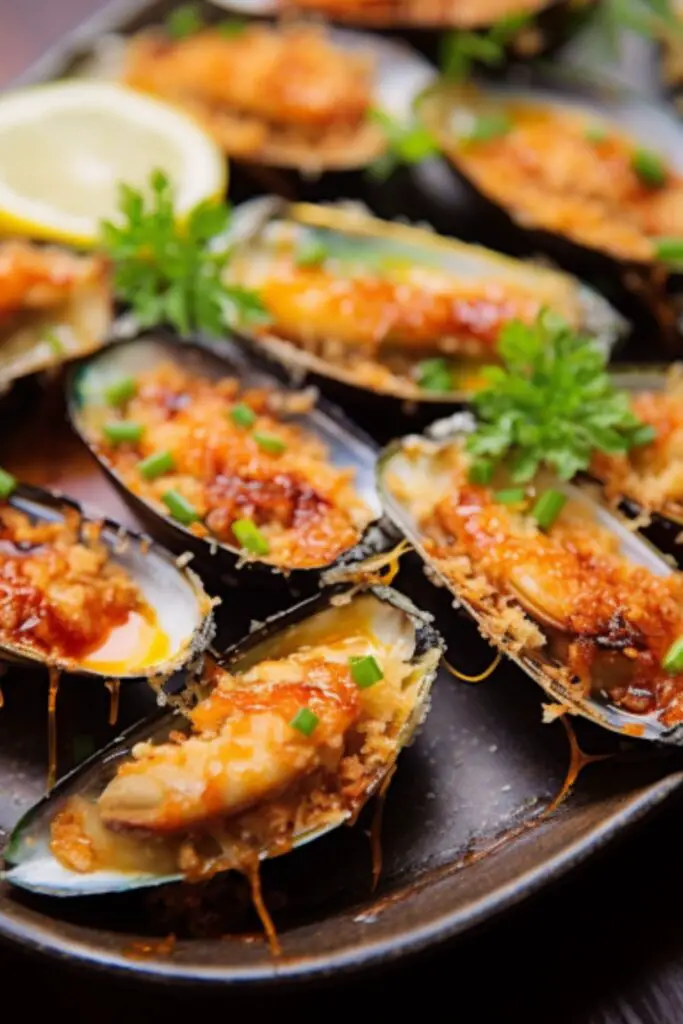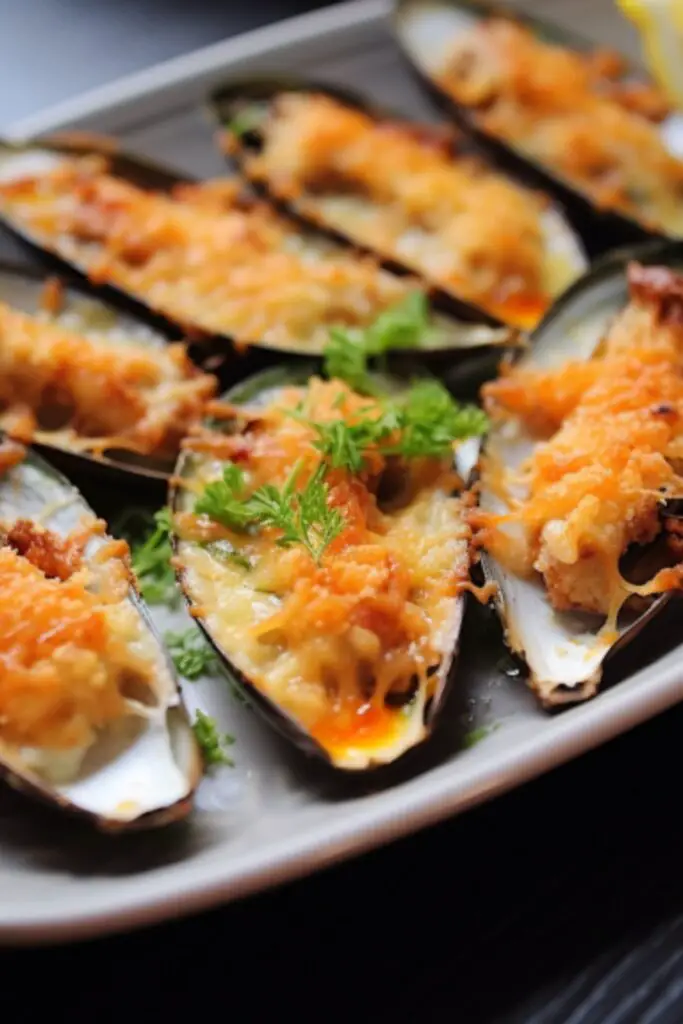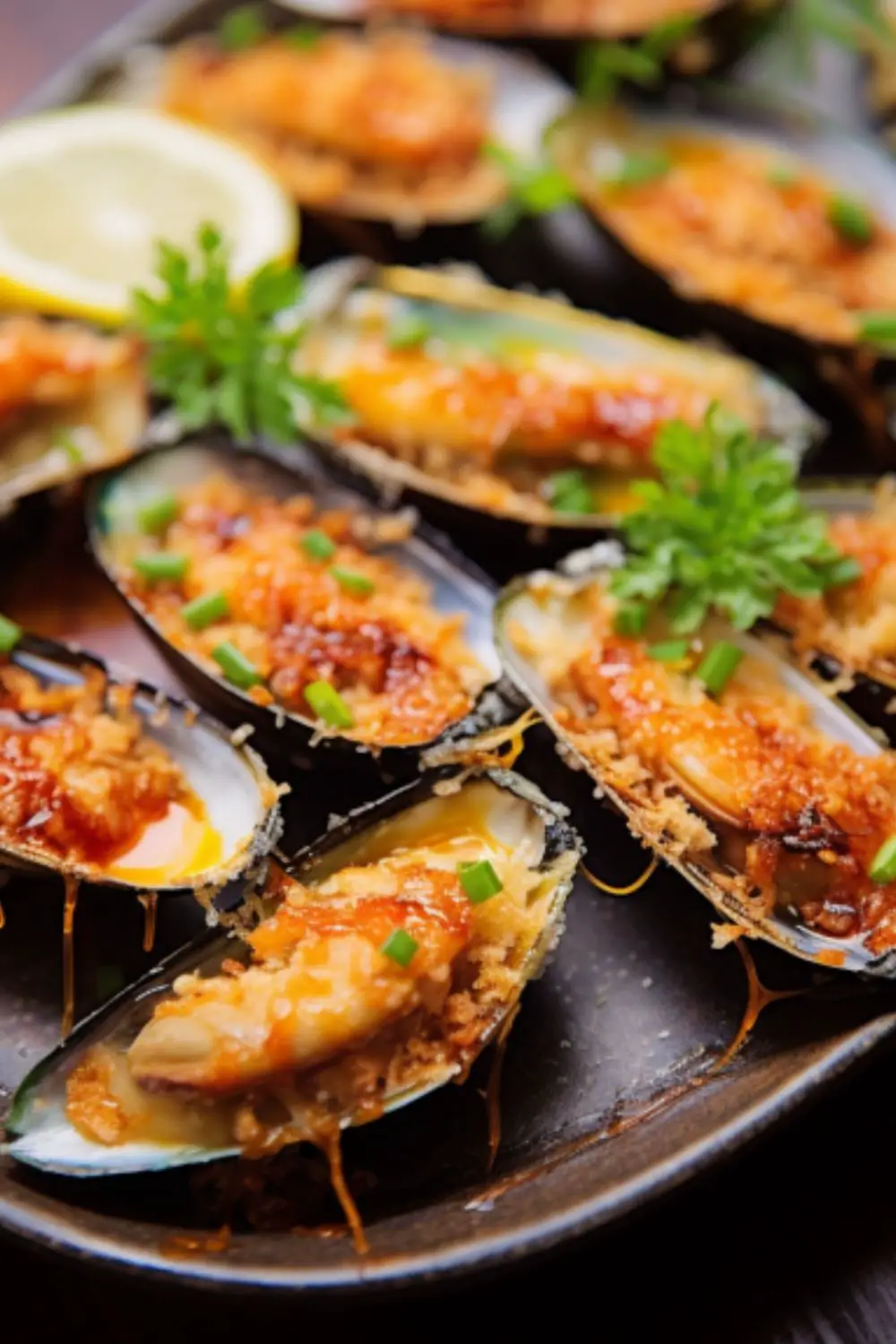Japanese cuisine has been gaining popularity across the globe for its healthy, delicious and unique flavors. One of the most popular dishes of Japanese cuisine is the Japanese Baked Mussels recipe.
This delicious dish is made with fresh mussels, butter, garlic, herbs, and a hint of soy sauce. This mouth-watering dish is sure to tantalize the taste buds of every seafood lover.
The Japanese Baked Mussels recipe is a great way to enjoy seafood at home without having to worry about the mess created by preparing raw mussels.

What is Japanese Baked Mussels?
Japanese Baked Mussels Recipe is a delicious seafood dish that is full of flavor and texture. It is a simple recipe that only requires a few ingredients and minimal prep time.
Mussels are steamed in a buttery garlic herb sauce and then topped with a hint of soy sauce. This dish is sure to become a favorite in your home.
Why You’ll Love this Japanese Baked Mussels?
This Japanese Baked Mussels Recipe is a quick and easy dish that packs a lot of flavor. It is a great way to enjoy seafood at home without having to worry about the mess created by preparing raw mussels.
The buttery garlic herb sauce and hint of soy sauce give the dish an amazing flavor. The mussels are also cooked to perfection, making them juicy and succulent.
Plus, the dish is also low in fat and calories and is a great way to enjoy seafood without feeling guilty.
You will also like the following delicious Recipes!
The Ingredients
Frozen mussels: The key ingredient in this Japanese Baked Mussels recipe is fresh mussels. You can use frozen mussels for the dish, but it’s best to use fresh or live mussels for the optimal flavor.
Kewpie mayonnaise: Kewpie mayonnaise is a Japanese-style mayonnaise that has a unique flavor and texture
Sriracha: Sriracha is a type of chili sauce that has a spicy and tangy flavor.
Soy sauce: Soy sauce adds an extra layer of flavor to the dish and helps to balance out the other flavors in the recipe.
Lemon juice: Lemon juice adds a bit of tartness and brightness to the dish.
Masago (smelt roe): Masago is a type of fish roe that is often used in Japanese cuisine. It adds a bit of crunchiness to the dish and also helps to balance out the flavors.
Scallions (only the green parts): The green parts of scallions are used for garnishing and add a mild onion flavor to the dish.

Step by Step Instruction
Step 1:
Gather together all the ingredients. Begin by rinsing and roughly chopping the mussels before combining them with Kewpie mayonnaise, Sriracha, soy sauce, lemon juice, half of the masago and scallions in a bowl.
Step 2:
Then place the mixture back into its respective shells and line a baking tray with foil before placing the mussels on it.
Step 3:
Pop the baking tray into an oven preheated to 450 degrees and bake for 10 minutes or until the top of each mussel is golden brown.
Step 4:
Once cooked, take them out and serve with a garnish of remaining masago and scallions. Enjoy!
Tips and Tricks
• If you are using fresh mussels, make sure to scrub them clean before preparing the dish.
• For an extra kick of flavor, you can add a tablespoon of sesame oil to the sauce.
• To get perfectly cooked mussels, time is key. Keep an eye on the mussels and take them out of the oven when they turn golden brown.
• Make sure to use the highest quality ingredients for best results.
• For a different twist, try using Italian-style bread crumbs instead of masago.
• If you are looking for a healthier alternative, substitute Kewpie mayonnaise with Greek yogurt or sour cream.

Nutrition Information
This Japanese Baked Mussels Recipe is a healthy and nutritious dish. One serving of the dish provides

How to Store Japanese Baked Mussels?
This Japanese Baked Mussels Recipe can be stored in an airtight container in the refrigerator for up to 3 days.
To reheat, simply transfer the mussels to a baking dish and bake in a preheated oven at 350°F for 10 minutes.
Variations
This Japanese Baked Mussels Recipe can be easily adapted to suit your taste and preferences. Here are a few variations you can try:
- For a spicy twist, add 1 teaspoon of chili flakes to the sauce
- To make it cheesy, sprinkle grated cheese on top before baking
- Swap out the mayonnaise for plain yogurt for a healthier version
- For a heartier dish, add some cooked bacon to the sauce.
- For an Asian twist, replace the soy sauce with teriyaki sauce.
Serving Suggestions
This Japanese Baked Mussels Recipe can be served as a starter or light meal. Serve it with a side of steamed white rice and some steamed vegetables for a complete meal.
You can also serve the mussels on top of a bed of salad greens, such as spinach or arugula, for an added

Equipment
- baking tray
- oven
Ingredients
- 2 dozen frozen mussels on the half shell
- 1 cup Kewpie mayonnaise
- 2 tsp Sriracha
- 2 tsp soy sauce
- 2 tsp lemon juice
- 4 tbsp masago smelt roe
- 2 Stalk scallions only the green part
Instructions
- Rinse and roughly chop the mussels, then combine with Kewpie, sriracha, soy sauce, lemon juice, half of the masago and scallions in a bowl.
- Place the mixture back into the shells and line a baking tray with foil before putting them on it.
- Broil at 450 degrees for around 10minutes until the top of each mussel is golden.
- Serve and garnish with the remaining masago and scallions.
Notes
Nutrition
Frequently Asked Questions (FAQ)
What kind of mussels should I use for this recipe?
You should use fresh mussels for this recipe. You can find fresh mussels at most seafood markets.
Is this dish gluten-free?
Yes, this dish is gluten-free as long as you use a gluten-free soy sauce.
Can I freeze this dish?
No, it is not recommended to freeze this dish as the texture of the mussels may be compromised.
Is this dish suitable for a vegan or vegetarian diet?
No, this dish is not suitable for a vegan or vegetarian diet as it contains butter and seafood.
Conclusion
The Japanese Baked Mussels is a delicious seafood dish that is full of flavor and texture. It is a simple recipe that only requires a few ingredients and minimal prep time.
The buttery garlic herb sauce and hint of soy sauce give the dish an amazing flavor.
Plus, the dish is low in fat and calories and is a great way to enjoy seafood without feeling guilty. Give this delicious dish a try and you’ll be sure to fall in love with it.
